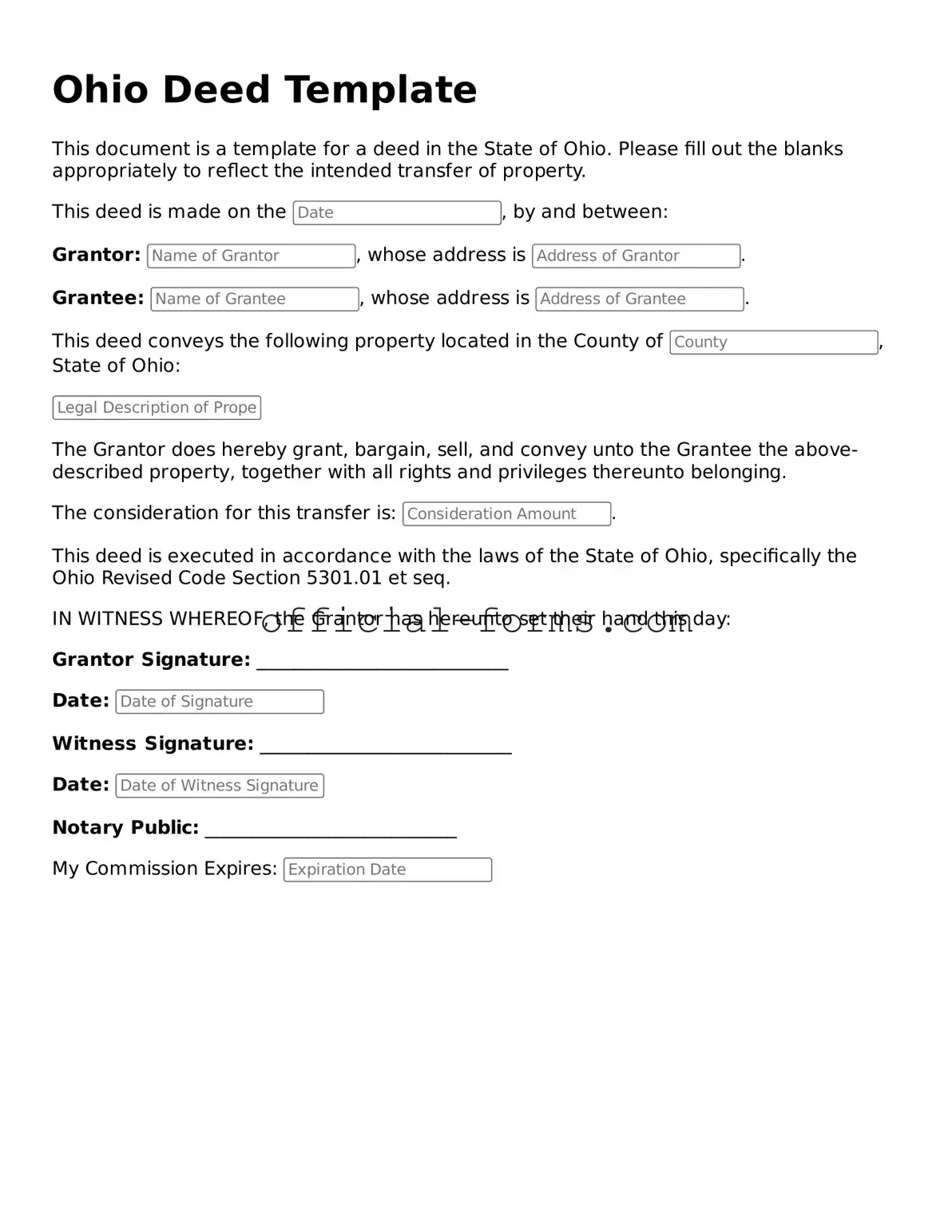Filling out a deed form in Ohio is a crucial step in the process of transferring property ownership. However, many individuals make common mistakes that can lead to complications down the line. Understanding these pitfalls can help ensure a smoother transaction.
One frequent error occurs when the names of the parties involved are not clearly stated. It is essential to use the full legal names of both the grantor (the person transferring the property) and the grantee (the person receiving the property). Omitting middle names or using nicknames can create confusion and may lead to legal disputes.
Another mistake involves the failure to provide a complete and accurate legal description of the property. A vague or incorrect description can render the deed ineffective. It is important to include details such as the parcel number, lot number, or any specific measurements that clearly define the property boundaries.
Many people also overlook the requirement for notarization. In Ohio, a deed must be signed in the presence of a notary public to be considered valid. Neglecting this step can invalidate the deed, making it unenforceable. Ensuring that all signatures are properly notarized is a critical step in the process.
Additionally, individuals sometimes forget to include the necessary consideration. This refers to the value exchanged for the property, which can be monetary or otherwise. Leaving this section blank can raise questions about the legitimacy of the transaction.
Another common oversight is failing to check for any existing liens or encumbrances on the property. If a property has outstanding debts or claims against it, the new owner may inherit these issues. Conducting a thorough title search prior to completing the deed can help avoid this problem.
People often neglect to record the deed with the appropriate county office. Even if the deed is filled out correctly, it must be filed to provide public notice of the ownership change. Failing to record the deed can lead to disputes about ownership and may complicate future transactions.
Moreover, individuals may not understand the tax implications associated with property transfers. In Ohio, certain taxes may apply when transferring property, and failing to account for these can lead to unexpected financial burdens. Consulting with a tax professional can help clarify these obligations.
Lastly, some individuals do not seek legal advice when filling out the deed form. While it may seem straightforward, the nuances of property law can be complex. Engaging a legal expert can provide valuable insights and help avoid mistakes that could have long-term consequences.
